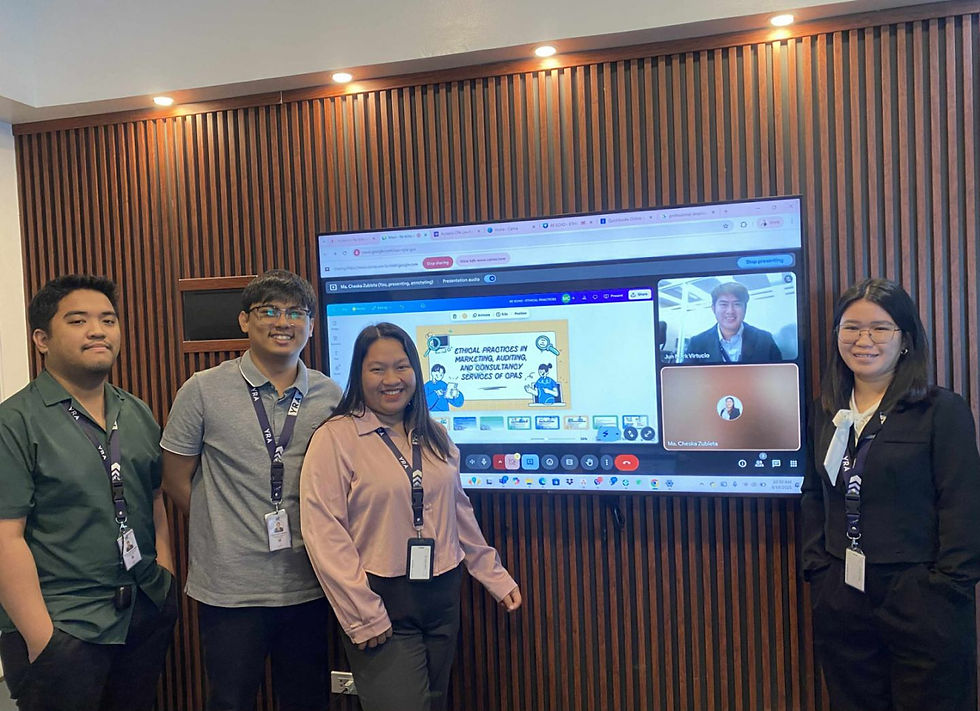Obtaining and Understanding the Business for Financial Statements Audits
- Atty. Yasser Aureada, CPA

- Oct 14
- 2 min read

Why Understanding the Business Matters
Auditors don’t just review numbers—they must deeply understand the business itself. According to PSA 315 (Revised), the goal is to identify and assess the risk of material misstatement (ROMM) in financial statements. This requires examining the entity’s operations, environment, controls, and industry to tailor audit procedures effectively.
By doing so, auditors provide reasonable assurance that financial statements are free from material misstatements—whether due to error or fraud.
The Risk-Based Audit Approach
Auditing is risk-focused. The phases of a risk-based audit include:
Risk Assessment: Identifying areas where material misstatements could occur.
Procedures: Inquiries with management, analytical reviews, observation, and inspection.
Audit Risk Model: Breaking risk into three parts:
Inherent Risk: Susceptibility of accounts to misstatements.
Control Risk: The chance that internal controls fail to prevent or detect misstatements.
Detection Risk: The risk that audit procedures miss existing misstatements.
Together, these risks form the Audit Risk (AR) score, guiding the level of audit work required.
Key Requirements of PSA 315
The standard sets out several critical requirements:
Risk Assessment Procedures (Req. 13 & 14): Auditors must perform inquiries, analytical procedures, and observations to gather evidence.
Team Discussions (Req. 17): Engagement partners and team members must discuss risks and reporting frameworks.
Entity Understanding (Req. 19): Auditors must examine the entity’s:
Structure, ownership, and governance
Business model (including IT integration)
Industry, regulatory, and external factors
Internal and external performance measures
Industry, Regulatory, and Performance Factors
A thorough audit requires evaluating external and internal forces affecting the entity:
Industry Factors: Competition, demand cycles, seasonality, and technological changes.
Regulatory Factors: Applicable frameworks, taxation, policies, legal environments, and compliance obligations.
Performance Metrics: The measures management uses to assess financial performance, which may create pressure points leading to potential misstatements.
The Role of Laws and Regulations
Under PSA 250, auditors must distinguish between:
Direct-impact laws (e.g., tax or pension laws) that directly affect financial disclosures.
Indirect-impact laws (e.g., environmental or operational regulations) that may not change financial figures directly but are critical to business continuity and compliance.
Final Takeaways
Always assess ROMM at both financial statement and assertion levels.
Apply a risk-based approach throughout the audit.
Maintain professional skepticism to detect fraud or bias.
Tailor procedures to each entity’s unique risks, environment, and industry.
By thoroughly understanding the business, auditors can provide high-value insights beyond compliance—helping organizations strengthen governance, risk management, and overall financial reporting integrity.




Comments